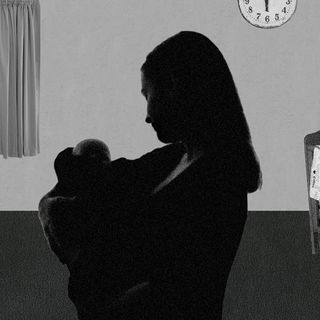
1 in 4 Women Have Been Assaulted by a Partner: WHO
Levels of violence were higher in low- and middle-income countries across South Asia and sub-Saharan Africa, a new report found.

A quarter of women and girls will have faced some form of sexual or physical violence in their intimate relationships by the time they turn 25, a study by the World Health Organization shows. Globally, about one-third of women — more than 736 million — are likely to experience physical or sexual abuse in their lifetime. The analysis undergirds that gendered-violence has devastatingly persevered and is likely to start at a young age.
“Violence against women is endemic in every country and culture, causing harm to millions of women and their families, and has been exacerbated by the Covid19 pandemic,” WHO Director-General Dr. Tedros Adhanom Ghebreyesus said in a press release.
The report is said to be “one of the largest-ever” studies based on data between 2000 to 2018. It analyzed data on non-intimate- (someone who is a stranger or the victim is familiar with) and intimate-partner violence from 161 countries. The report notes that domestic violence continues to be the most pervasive and prevalent form of abuse against women, affecting around 641 million women globally. Additionally, around 6% of women across countries face sexual assault by someone other than their husband or partner.
Related on The Swaddle:
UN: Most Governments’ Responses to Covid19 Failed To Protect, Support Women
The report pegs the number of women facing physical and sexual violence at somewhere around 800 million but notes that the true figure exceeds this given the high levels of stigma and under-reporting of sexual abuse. Moreover, the report excludes cases of gender violence during the Covid19 pandemic. In April last year, the United Nations Population Fund predicted that more than 15 million cases of domestic violence could be reported during Covid19 lockdowns.
A key finding of the analysis is that women report abuse from a young age, as early as 15 years. Women in the age bracket of 30-39 years faced the highest rates of violence. While the report doesn’t cover child abuse, the number of girls below the age of 15 physically or sexually abused has risen globally.
Levels of violence were higher in low- and middle-income countries across South Asia and sub-Saharan Africa regions. In South Asia, the proportion of women between 15-49 years likely to face violence was as high as 35%.
The figures paint a grim picture and echo a national and global reality. In India, domestic and gendered violence carries a veiled social approval and remains deeply entrenched. Out of the 4.05 lakh crimes against women registered as of 2019 almost a third of them are linked with “cruelty by husband or his relatives,” according to the National Crime Records Bureau’s 2019 data.
During the pandemic, domestic violence reports increased by 2.5 times within the span of four weeks, according to official data released by the National Commission for Women. “They were confined to the walls of the house with their abusers. Drinking or not drinking, these abusers find reasons on a daily basis to vent their frustration on the women, and the pandemic made it worse,” activist Shabnam Hashmi told The Print.
The true extent of gender violence continues to elude societies, as global and national findings attempt to discern the impact of sexual and physical abuse. Violence against women also includes emotional trauma, which remains veiled owing to the precarity, lack of awareness, and social stigma.
The report acts as a wake-up call against the surge in gender violence globally. “One of the challenges is that it is often shunted off to the side as a women’s issue,” Dr. Claudia García-Moreno, who leads the WHO’s work on violence against women, told The Guardian. The multi-dimensionalaspect of violence against women needs to be treated as a societal problem, with each section of society equally invested in tackling it, she noted.
“There’s an urgent need to reduce stigma around this issue, train health professionals to interview survivors with compassion, and dismantle the foundations of gender inequality,” she said. García-Moreno suggested comprehensive sex education training, reframing schools as safe spaces, and imparting lessons on how to craft healthy relationships rooted in equality and mutual respect.
Payal Seth, a consultant and a scholar at Brown University, also noted the use of “nudge theory” in context to India. “Just as the state and national governments in India have emphasized the importance of using sanitation facilities through a series of media campaigns and involving celebrities, the same can be done to nudge people to abandon the practice of domestic violence,” she told The Wire.
Gender violence has been dubbed as a shadow pandemic in itself — one that has endured across geographical, social, and cultural boundaries.
“But unlike Covid-19, violence against women cannot be stopped with a vaccine,” the WHO report says. “We can only fight it with deep-rooted and sustained efforts — by governments, communities, and individuals — to change harmful attitudes, improve access to opportunities and services for women and girls, and foster healthy and mutually respectful relationships.”
For legal recourse on domestic abuse in India, visit National Legal Services Authority. The domestic abuse national helpline number is 181 while women police helpline numbers are 1091 and 1291, and the National Commission for Women can be reached out to on 7217735372 on WhatsApp.
Saumya Kalia is an Associate Editor at The Swaddle. Her journalism and writing explore issues of social justice, digital sub-cultures, media ecosystem, literature, and memory as they cut across socio-cultural periods. You can reach her at @Saumya_Kalia.
Related


Why We Trust the People We Trust
